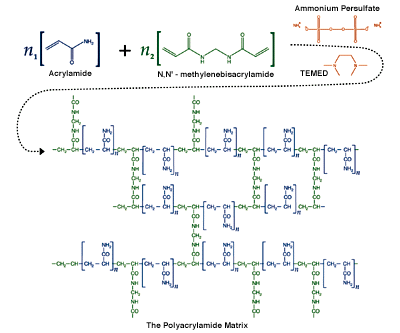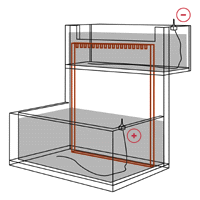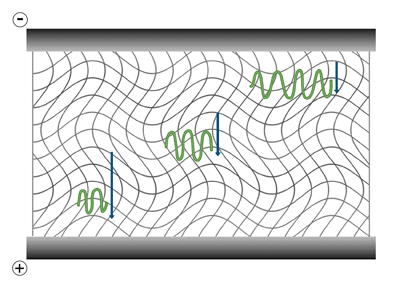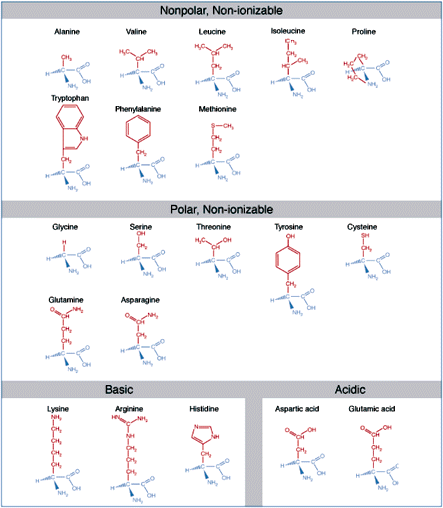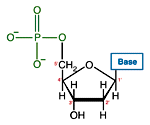Electrophoresis Articles
The Polyacrylamide Matrix
Polyacrylamide gels are formed by the polymerization of acrylamide in an aqueous solution in the presence of small amounts of a bifunctional crosslinker. The crosslinker is usually methylenebisacrylamide (bis, or MBA). The polymerization of a polyacrylamide matrix with methylenebisacrylamide cross-linking. Polyacrylamide gels are formed by the polymerization of acrylamide in aqueous solution in the presence…
Read MoreThe Electrophoresis Matrix
In-gel electrophoresis the matrix forces sample components to separate by size, as they move through its porous structure. The matrix provides greater resistance to the movement of larger molecules. It also performs additional functions including the reduction of convection currents and the inhibition of sample diffusion, encouraging the separated components to remain as sharp, distinct…
Read MoreThe Mechanical and Electrical Dynamics of Gel Electrophoresis – Ohm’s Law
Ohm’s Law: Relationships between electrical parameters Ohm’s law describes the relationship between the voltage, V, the current, I, and the resistance, R, in a DC circuit. A greater voltage produces a greater proportional current through a given resistor: V = IR A variation of Ohm’s law describes how small changes in electrical current can produce…
Read MoreThe Mechanical and Electrical Dynamics of Gel Electrophoresis — Electrophoresis System Dynamics
Electrophoresis System Dynamics The apparatus in gel electrophoresis constitutes an electrical/thermodynamic system. The apparatus receives energy from the power source and releases energy as heat. The figure below shows a stylized representation of a typical vertical slab gel apparatus. The gel, perfused with buffer solution and held between two glass plates, has been clamped in…
Read MoreThe Mechanical and Electrical Dynamics of Gel Electrophoresis – Intro and Sample Mobility
The term “electrophoresis” refers simply to the movement of particles by an electric force. The first electrophoresis experiments were carried out on molecules in a conductive buffer solution, where the only force acting on the sample was the electric field. The vast majority of current laboratory techniques are performed in a matrix perfused by an…
Read MoreBiological Macromolecules – Proteins
Proteins Like nucleic acids, proteins are polymers. While with nucleic acids the repeating unit is the nucleotide, with proteins, the analogous repeating unit is the amino acid. Amino acids consist of a central carbon that carries an amino group, a carboxyl group, hydrogen, and a side-chain group. Amino acids are distinguished by the properties of…
Read MoreBiological Macromolecules: Nucleic Acids
Nucleic Acids Like many biological molecules nucleic acids are polymers, long molecules formed of repeating units. With nucleic acids, the repeating unit is the nucleotide. A nucleotide consists of a five carbon sugar, a nitrogen containing base and a phosphate group. The two primary kinds of nucleic acids, deoxyribonucleic acid (DNA) and ribonucleic acid (RNA),…
Read MoreDenaturing Protein Electrophoresis: SDS-PAGE
In their native form, proteins fold into a variety of shapes, some compact, some elongated. The rate of migration of native proteins through a sieving medium is therefore more a reflection of their relative compactness, and less an accurate measure of molecular weight. Denaturing the proteins nullifies structural effects on mobility, allowing separation on a…
Read More
